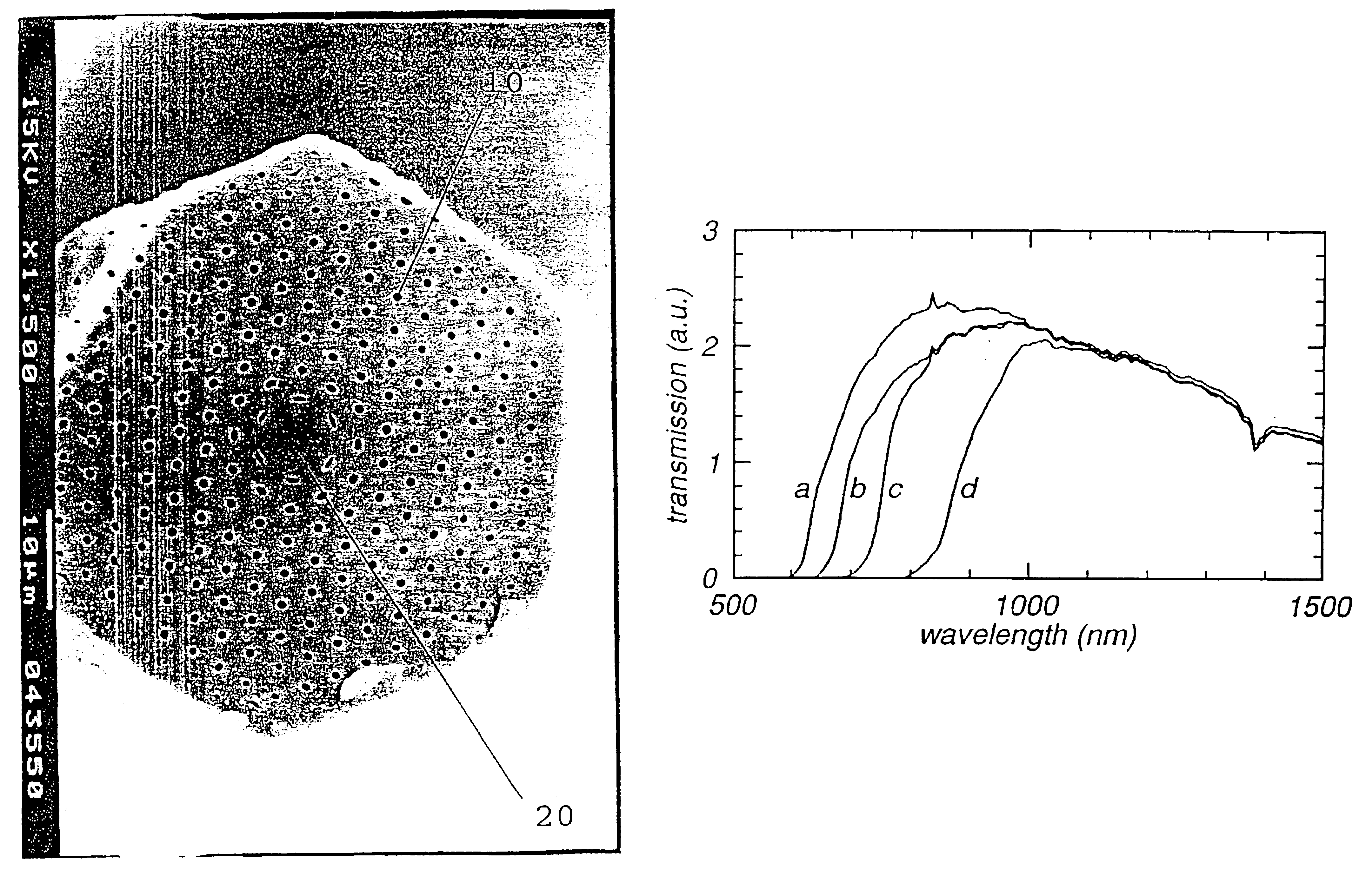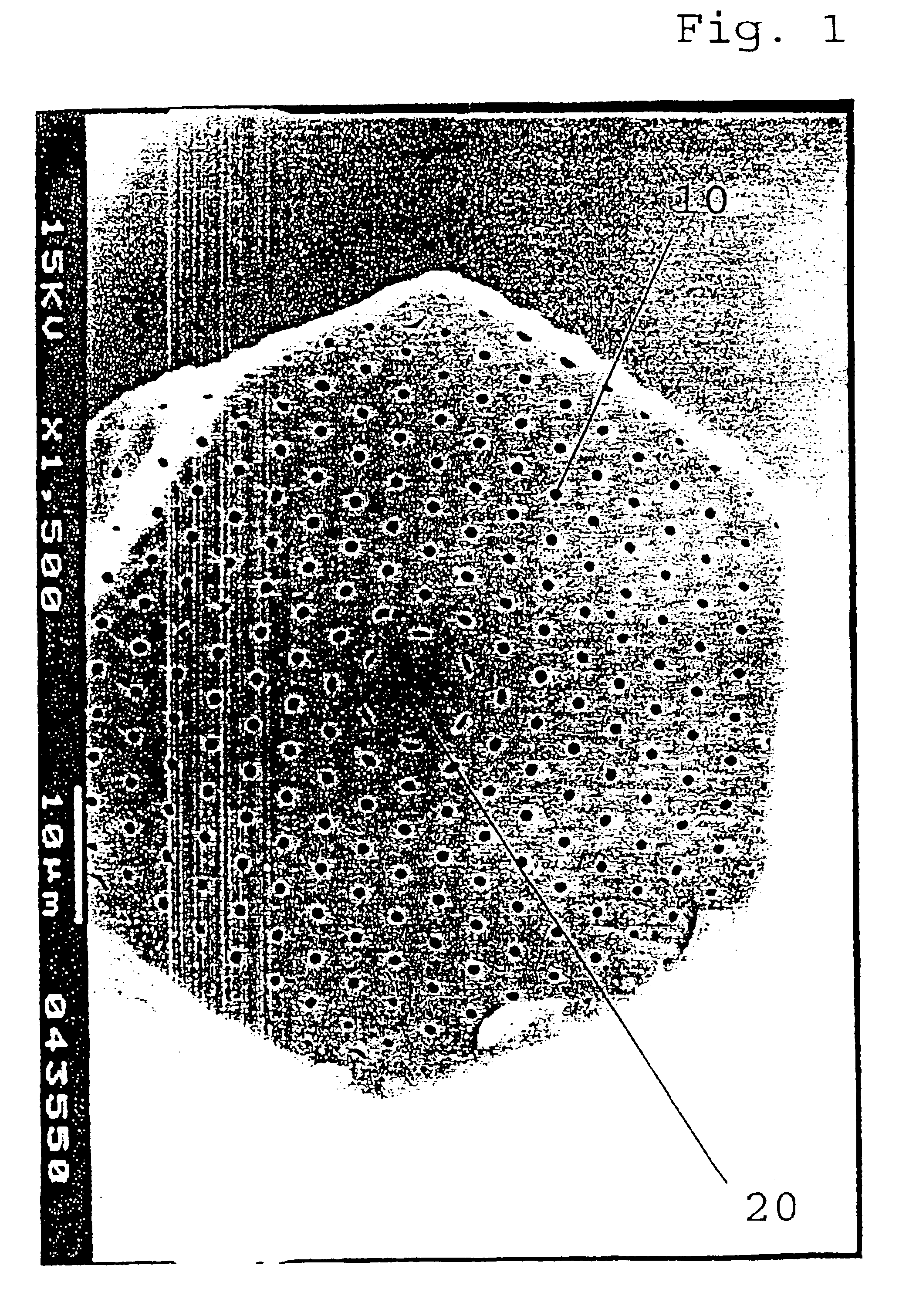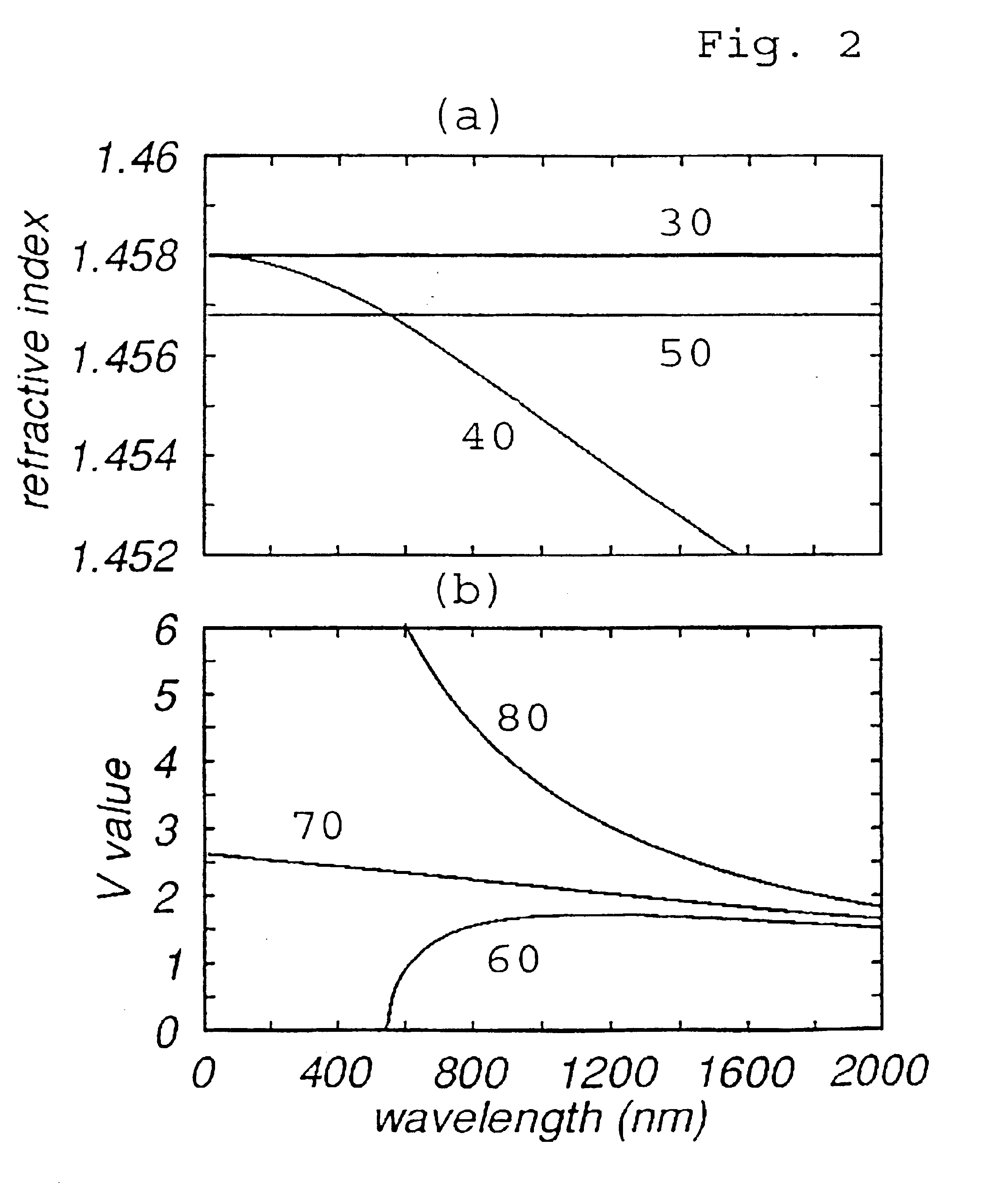Photonic-crystal fibers and photonic-crystal fiber devices
a technology of photonic crystal fibers and fibers, applied in the field of photonic crystal fibers and photonic crystal fibre devices, can solve the problems of loss, too strong at longer wavelengths, and too weak at shorter wavelengths
- Summary
- Abstract
- Description
- Claims
- Application Information
AI Technical Summary
Benefits of technology
Problems solved by technology
Method used
Image
Examples
Embodiment Construction
The fibre of FIG. 1 is about 65 μm across, of hexagonal cross-section and includes a cladding region of undoped silica containing a lattice of holes 10. The holes 10 are arranged at the centres of hexagonal unit cells. (Some of the holes have been distorted by the fabrication process). The diameter of the holes 10 is 0.7 μm and the pitch 3.5 μm. The fibre also includes a central unit cell 20 that is a ‘defect’: it has no hole at its centre and it is made from silica doped with fluorine.
In the manufacture of the fibre, silica capillaries were stacked in a close-packed array to form a fibre preform. At the centre of the array, a solid rod of fluorine-doped silica was used, instead of a silica capillary, to form the core, with an index depression of 1.2×10−3. The preform was then drawn, using a drawing tower, into a fibre.
FIG. 2(a) shows that the refractive index of pure silica (plot 30) is higher than that of fluorine doped silica (plot 50) (note: material dispersion has been neglecte...
PUM
| Property | Measurement | Unit |
|---|---|---|
| Structure | aaaaa | aaaaa |
| Abrasive | aaaaa | aaaaa |
| Metallic bond | aaaaa | aaaaa |
Abstract
Description
Claims
Application Information
 Login to View More
Login to View More - R&D
- Intellectual Property
- Life Sciences
- Materials
- Tech Scout
- Unparalleled Data Quality
- Higher Quality Content
- 60% Fewer Hallucinations
Browse by: Latest US Patents, China's latest patents, Technical Efficacy Thesaurus, Application Domain, Technology Topic, Popular Technical Reports.
© 2025 PatSnap. All rights reserved.Legal|Privacy policy|Modern Slavery Act Transparency Statement|Sitemap|About US| Contact US: help@patsnap.com



